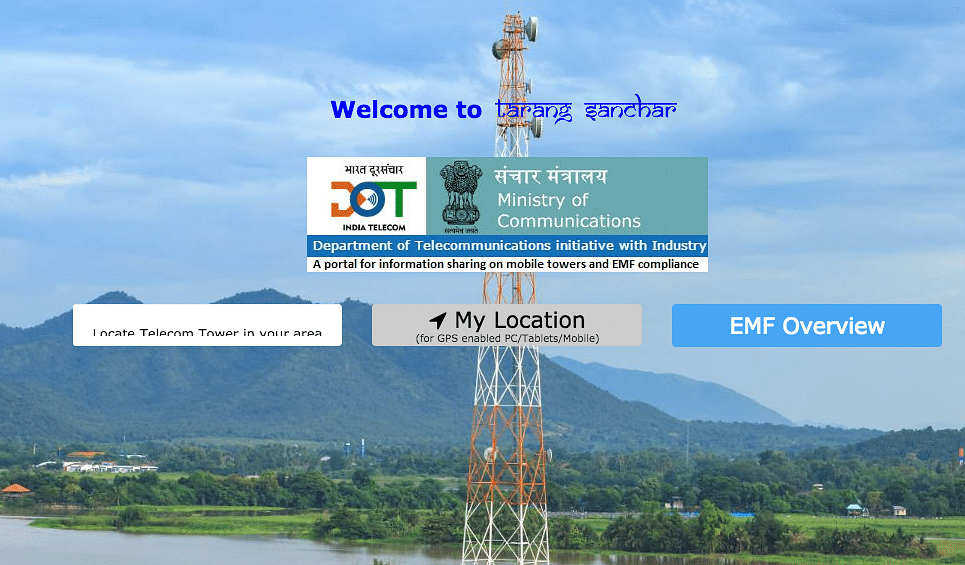Infrastructure
Explained: What Is The ‘Tarang Sanchar’ Portal, Why It Was Needed And How It Works
- Do you want to know which mobile towers around you adhere to safety guidelines the most? A new portal launched by the Department of Telecom helps you find out.

Tarang Sanchar portal
Since the dawn of the 21st Century, the telecom revolution in India has played an instrumental role in propelling growth in the economy. The Indian telecom industry has grown from a teledensity of 3.58 in March 2001 to 86.25 in January 2017. Teledensity is defined as the number of phones per every hundred individuals.
Internet services on mobile phones became the next frontier in the mobile revolution which has exhibited massive potential for giving an impetus to economic growth. With only one-fifth of the total wireless subscribers availing broadband services on their mobile phones (242.57 million subscribers out of 1164.2 million wireless subscribers), there lies tremendous scope for growth in these services, especially with the Jan Dhan-Aadhaar-Mobile (JAM) trinity becoming a cornerstone of the NDA government’s efforts to deliver effective governance.
The availability of quality mobile telephone services depends on the ubiquitous existence of robust telecom infrastructure. Telecom towers are one of the most critical components in ensuring availability of uninterrupted mobile services.
Over the years, with an increase in the usage of mobile phones, there has also been a surge in the apprehensions regarding the ill effects of the radiations which emanate from such towers.
The World Health Organisation (WHO) has referred to approximately 25,000 articles published around the world over the past 30 years, and based on an in-depth review of scientific literature, concluded that:
Moreover, the Department of Telecommunications (DOT) has gone on to keep the precautionary electromagnetic frequency (EMF) safety exposure limits for the Radio Frequency Field (Base Station Emissions) to one-tenth of the safe limits for all areas in India. This was in accordance with the prescriptions of the International Commission on Non-Ionizing Radiation Protection (ICNIRP), as recommended by World Health Organisation (WHO).
The Ministry of Communications launched the Tarang-Sanchar portal last week to bring in more transparency in this regard. This would be ensured by disseminating information to the public regarding EMF signals and to allay the misconceptions and fear of health issues due to EMF emissions from mobile towers.
The public, at large, will be now able to check the current status of the mobile tower located anywhere in the country and the EMF signal compliance status of the same.
Citizens can now track the location of all the mobile towers that are present in the vicinity of their location. This image gives an illustration of the mobile towers around the pincode-110001 as displayed on the Tarang Sanchar portal.
Developed on Public-Private Partnership (PPP) mode, Tarang Sanchar portal also provides a rich repository of material in its ‘Learn’ section on the subject of Electromagnetic Fields (EMF) and makes an earnest attempt to bust the myths surrounding the radiation from mobile towers through videos .
The Tarang Sanchar platform also provides information regarding the audits conducted on mobile towers by the Telecom Enforcement Resource and Monitoring (TERM) wing under the ministry, both as a part of EMF Audit of Mobile Towers as well as on the basis of requests from public for conducting such audit. The following images show such inspection data for the year 2016-17 for Delhi.
Moreover, it also provides citizens a platform to register a request to get a mobile tower tested by the authorities.
The Tarang Sanchar portal can be counted as an addition to the series of efforts being made by the NDA government to provide transparent governance. In its own way, the portal adds to the credibility of the Digital India initiative.
Support Swarajya's 50 Ground Reports Project & Sponsor A Story
Every general election Swarajya does a 50 ground reports project.
Aimed only at serious readers and those who appreciate the nuances of political undercurrents, the project provides a sense of India's electoral landscape. As you know, these reports are produced after considerable investment of travel, time and effort on the ground.
This time too we've kicked off the project in style and have covered over 30 constituencies already. If you're someone who appreciates such work and have enjoyed our coverage please consider sponsoring a ground report for just Rs 2999 to Rs 19,999 - it goes a long way in helping us produce more quality reportage.
You can also back this project by becoming a subscriber for as little as Rs 999 - so do click on this links and choose a plan that suits you and back us.
Click below to contribute.
Latest